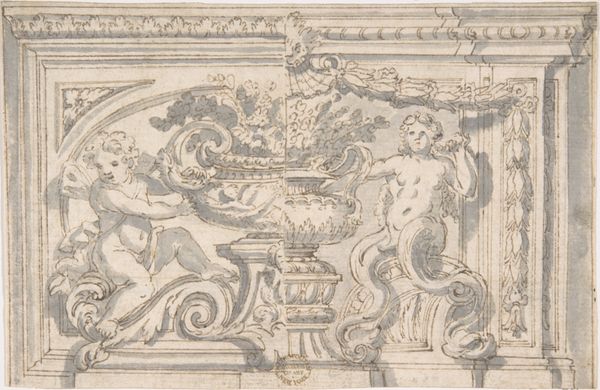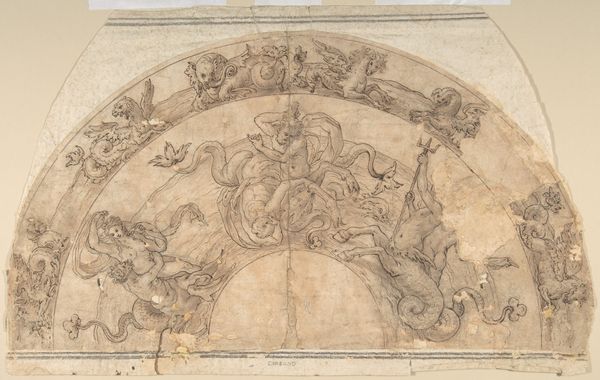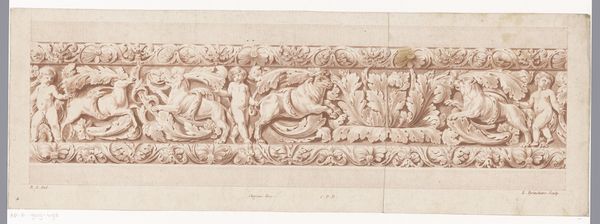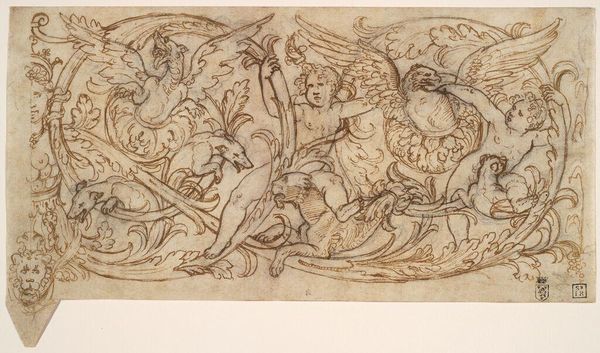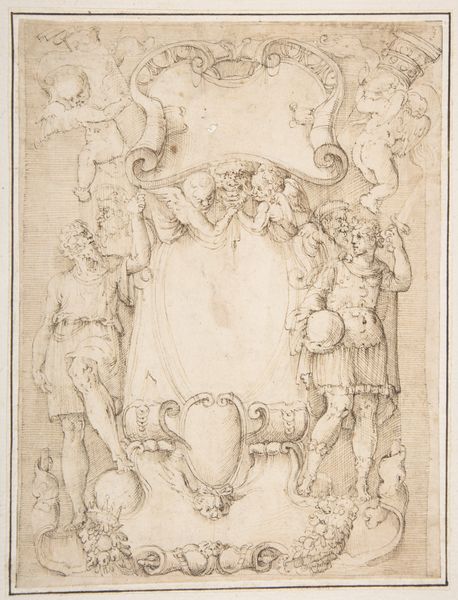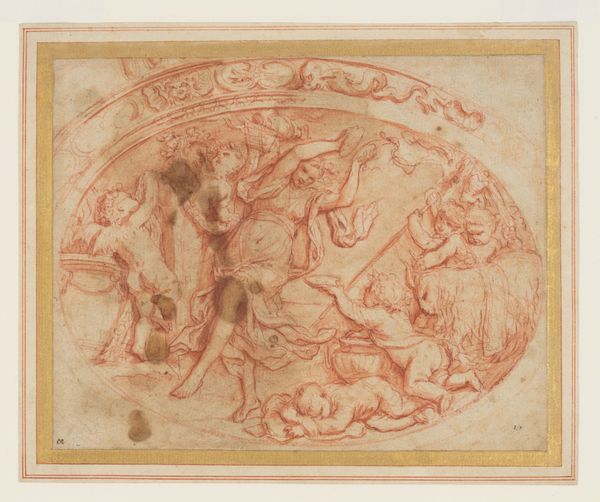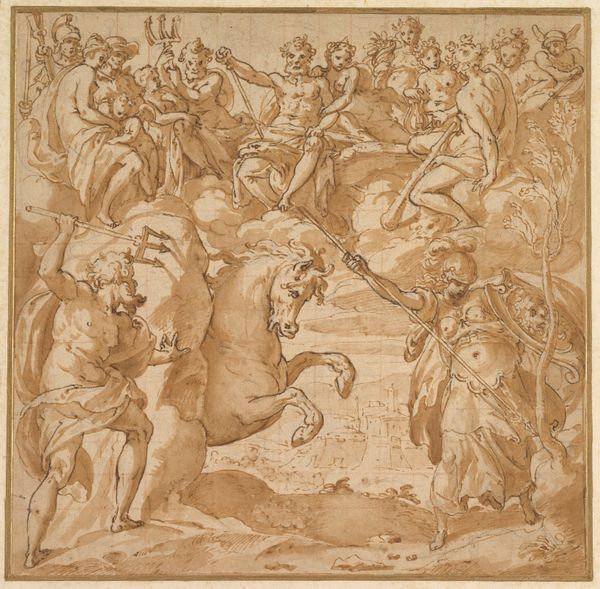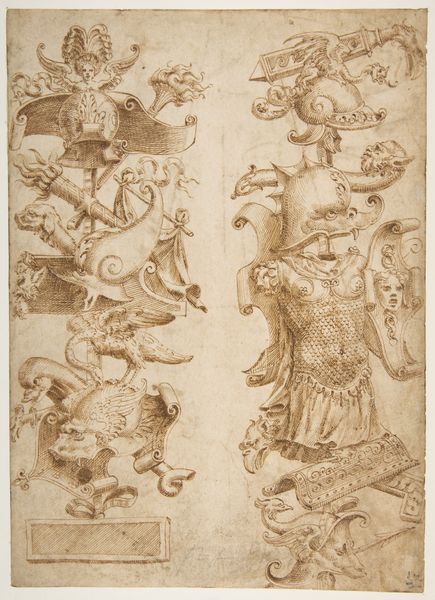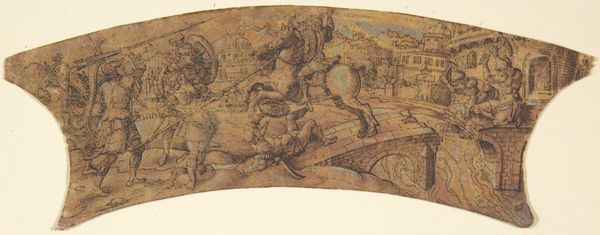
Figures, Horses, and Sphinx Entwined in Foliage and Strapwork 1800 - 1900
0:00
0:00
Dimensions: 2 5/16 x 5 11/16 in. (5.9 x 14.5 cm)
Copyright: Public Domain
Curator: Here we have a fascinating drawing from the Metropolitan Museum of Art collection. Its title is "Figures, Horses, and Sphinx Entwined in Foliage and Strapwork." The museum estimates it was made sometime between 1800 and 1900 by an anonymous artist. Editor: My first impression is…wow, this looks like a fever dream rendered in sepia tones. So many intertwined figures! There’s an incredible sense of density, almost claustrophobia. Curator: I love that description! I think the "anonymous" aspect is especially interesting, because it leads you to think about who was actually making this image and why. Was it for personal study? A preliminary sketch for a larger work? The drawing medium – likely pencil and ink – speaks to a functional or preparatory use. Editor: Exactly! And you notice how it imitates relief sculpture or a frieze? It makes me think about craft and labor, about how these motifs, common in architectural decoration, are here being replicated by hand. A commentary on mass production, maybe, even pre-dating it in some ways? It feels like the artist is wrestling with those industrial changes on a micro-scale. Curator: I hadn't considered that industrial link, fascinating. For me, the dense entanglement, with all its mythological figures--horses, sphinxes, what looks like satyrs-- speaks to the era's obsession with classical antiquity filtered through Romantic sensibilities. There's almost too much symbolism packed into one image, like an overstuffed subconscious laid bare. The anonymity of the artist contributes to the mystery...we project ourselves into the absence. Editor: Yes, there's that push and pull – the classical forms meticulously rendered, yet bursting with a chaotic energy. Look closely, and you see the imperfections in the lines, the very hand of the artist betraying that control. What materials were accessible at that time is also a consideration--it affects labor involved as well as composition. Curator: Absolutely. Those tiny imperfections, like cracks in a facade, give it character. I'm drawn to the contrast between the clearly defined figures and the wildly energetic foliage – almost a struggle between order and chaos. It feels deeply human, doesn’t it? Editor: It does. For all its classical pretensions, this drawing offers a strangely vulnerable glimpse into its time – a negotiation between tradition, nascent industry, and perhaps a touch of existential angst! Curator: Precisely, like a whisper from the past grappling with an unknowable future.
Comments
No comments
Be the first to comment and join the conversation on the ultimate creative platform.
